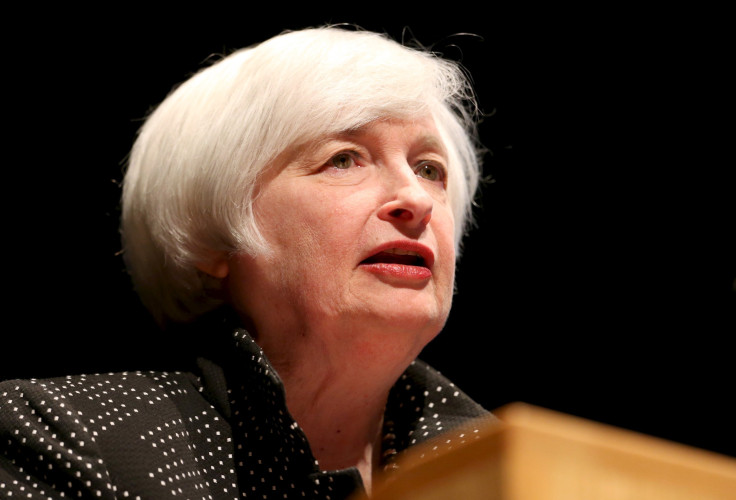Fed Rate Hike: Yellen Maintains Near-Zero Interest Rate

The U.S. Federal Reserve announced Wednesday that it would hold interest rates at the near-zero benchmark that has persisted since late 2008. The decision, relayed in a short press release that left the door open to a December rate hike, reflects concerns of weak global growth and a domestic economy still short of the robust health the Fed expects.
The central bank's resolve to hold off on an increase means a few more months, at least, of historically low interest rates for corporate borrowers and big investment banks enjoying a boom in mergers and acquisitions. Consumers, who see comparatively less upside, will have a little more time to refinance loans and take out mortgages at a bargain.
Few economists expected the Federal Open Markets Committee, which sets the rate, to budge. “The Fed has erred on the side of caution all year long,” said Bob Keiser, head of global markets intelligence at S&P Capital IQ. Although Fed Chair Janet Yellen has said she expected the rate-setting committee to move by year’s end, “recent economic data just doesn’t seem to give them the window to do so,” Keiser said.
The stage was set by a disappointing September jobs report that showed nonfarm employers added just 142,000 jobs, after a 12-month period that averaged nearly 240,000 new jobs a month. U.S. manufacturing has also fallen short of expectations, with key indices showing the lowest manufacturing activity since May 2013.
The FOMC opted to delay interest rate liftoff at its previous meeting in September, citing overseas economic impacts and continued slack in labor markets, along with inflation measures that have continued to underwhelm.
Headwinds from China and other emerging markets had contributed to the domestic sluggishness. Though, with Chinese economic growth expected to slow in coming quarters. "China demand weakness hurts emerging market economies all over," said Bill Irving, fixed income portfolio manager at Fidelity Investments, before the announcement Wednesday. "That’s a prime contributor to the decline in headline inflation that we’ve seen over the past year."
Though the FOMC cited economic trends abroad, the statement showed less concern than September's announcement. "The Committee continues to see the risks to the outlook for economic activity and the labor market as nearly balanced but is monitoring global economic and financial developments," the Fed's statement read.
With other emerging markets like Brazil stumbling, the dollar has strengthened, putting the squeeze on U.S. companies like Nike and General Mills, which have cited exchange rates as a drag on profits.
Still, major parts of the U.S. economy have surged in recent months, raising hopes that a rate liftoff in 2015 may still be possible. New jobless claims remain at four-decade lows, and service sector activity has hovered near seven-year highs. "Household spending and business fixed investment have been increasing at solid rates in recent months," the Fed statement read.
But those bright spots could be fleeting in the larger economic context. “There’s a huge divergence going on in the U.S. economy,” Keiser says. “Service is doing just fine, but the manufacturing sector could be on the verge of recession.”
The Fed has a dual mandate of controlling inflation while maximizing employment. While inflation has shown few signs of heating up, headline unemployment has neared the range the Fed sees as healthy. As Yellen has pointed out, however, that data overlooks the millions of working-age adults who have given up the job search or settled for part-time employment.
The final rate-setting meeting of 2015 is scheduled for Dec. 15-16. Expectations for a rate hike then rose after the Fed's decision was released. Futures markets used to hedge coming rate increases imply a near-50 percent chance of a December liftoff.
© Copyright IBTimes 2025. All rights reserved.





















